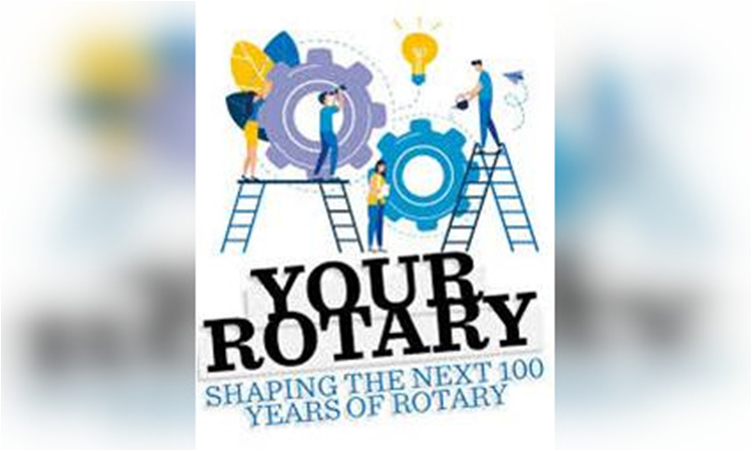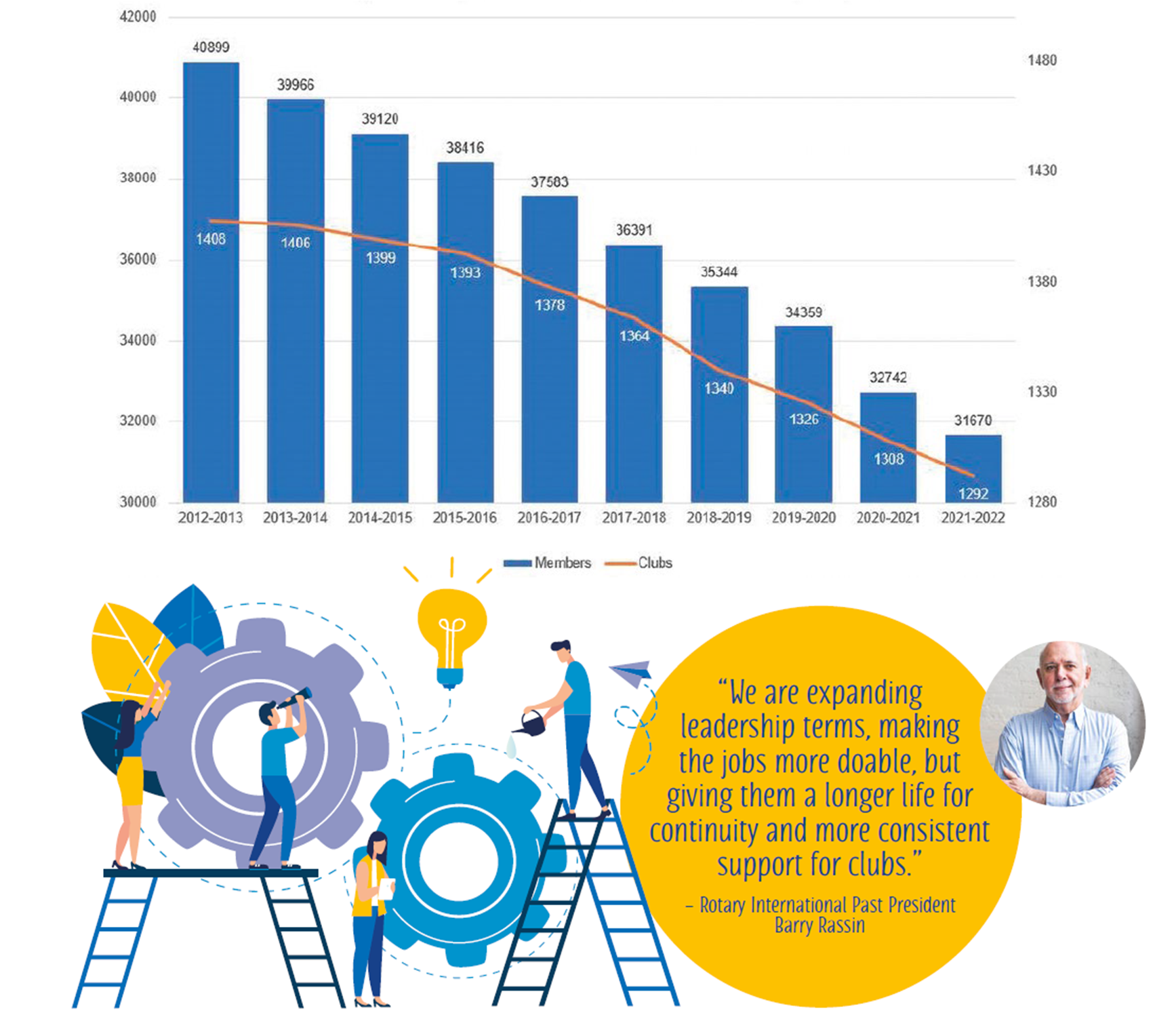
Our world is constantly changing and evolving, and it’s our ability to adapt and tackle challenges that sets us up for the future. Certainly, the past 18 months living in a COVID world has reinforced the need to adapt.
We know change can be unsettling as it takes us out of our comfort zone. We also know the only way organizations like Rotary can remain relevant and impactful, is by evolving to meet the needs of current members and future generations. To safeguard the future of Rotary and the good that Rotarians do, we must adapt while ensuring our members have a robust and fulfilling experience.
Worldwide, in the past 10 years Rotary recruited 1,385,000 members, while total membership has remained at around 1,200,000 for the past 20 years – Rotary is therefore losing as many existing members as it is gaining new members.

These trends are symptomatic of societal change, and the time has come to work together to address our most persistent challenges in contemporary ways.
Rotary founder Paul Harris said it best: “This is a changing world; we must be prepared to change with it. The story of Rotary will have to be written time and again.”
Within recent years, a few areas around the world have been planning a regional approach to these challenges, and now have an opportunity to be one of a small number of regions across the globe to pilot a new governance model devised by a committee of the RI Board, known as Shaping Rotary’s Future (SRF).
No matter the industry, it is product, strategy and structure that each play key roles in shaping an organization, and, when aligned, contribute significantly to success. The SRF model, with the overarching aim of making Rotary more effective with fewer layers delivering better support to clubs, has the potential to make us nimbler and more efficient in meeting all of our goals as members, clubs, districts and zones.
So, what does this pilot look like? How will it work for these pilot regions? And what is needed to do to make it happen?
What is being proposed?
All relevant districts would be placed within a region, governed by a Regional Council that would manage operations with the assistance of Regional Support Committees. A region would then be divided into sections or areas, with between 10 and 30 Rotary and Rotaract clubs within each section. Sections would be supported by a leader whose role would be to guide and motivate the clubs to reach their goals.
Additionally, there would be a Global Cadre or Specialist Support Team comprised of Rotarians with expertise on specific topics, from public image to fundraising, who could support regions, sections, clubs, and members.
Rotarians and Rotaractors within each region would be invited to apply for a position on the Regional Council, its Support Committees, the Global Cadre, or as a Section Leader. Once the slate of candidates is determined, members within each region will elect who will serve on the Regional Council and as their section or area leader.
Those elected would receive appropriate training from Rotary International, and currently appointed district governors would play a key advisory role in the pilot implementation and monitoring as they fulfill their leadership obligations.
What is the Regional Council?
The Regional Council supports and governs leaders and clubs in the relevant pilot region, managing the day-today activities of Rotary within that region, including assessing regional dues and creating committees. Each region would oversee groups of clubs called sections.
There are 12 positions on the Regional Council, each elected by the Rotarians and Rotaractors within the region to serve a three-year term. These positions include the chair, chair-elect, chair-nominee, treasurer, section leader liaison, and various chair positions to correspond to key Rotary activities.
What is a section leader?
A section leader supports and motivates clubs to set and deliver on their own goals in alignment with Rotary’s strategic priorities. Section leaders have a unique opportunity to localize their strategy to consider the strengths, weaknesses, and culture of their clubs in ways that are most meaningful to them and their members. Section leaders would communicate and represent Rotary in their local area, as well as relay their clubs’ needs to the Regional Council, providing leadership and relaying concerns.
A section leader would serve a two-year term and support approximately 10-30 Rotary and Rotaract clubs in a geographic area.
What is the Global Cadre?
The Global Cadre are Rotarians with expertise on specific topics. Their expertise may originate from their Rotary experience or their professional lives – and both of those experiences will be actively solicited and valued. A Global Cadre member would receive training about how to administer to and support sections, clubs and members. Roles will include functions such as public image, grants, fellowship, fundraising and programs.
What’s next?
Several approval processes are required at both the international and district levels before the pilot can proceed.
In November 2021, the Shaping Rotary’s Future Committee sought the guidance of the RI Board to progress the concept. In April 2022, the Council on Legislation will consider and vote on a constitutional amendment to allow the pilot to proceed. Finally, in May 2022, the clubs and districts in relevant zones will vote upon whether or not to participate in the pilot.
The aim of the pilot is to assess whether the plan increases our capability, effectiveness and efficiency. Elected district governors will continue to play a key advisory role in the process, which will include evaluation, monitoring and review along the way.
The regionalization team will continue to communicate with districts and clubs over ensuing months and each district has an appointed representative arranging presentations to interested clubs and members.
For full details of the proposed model’s objectives, how it works and plans to pilot it, contact the RSF project team.